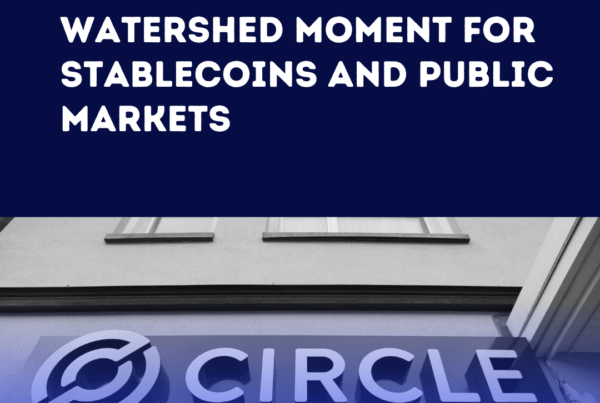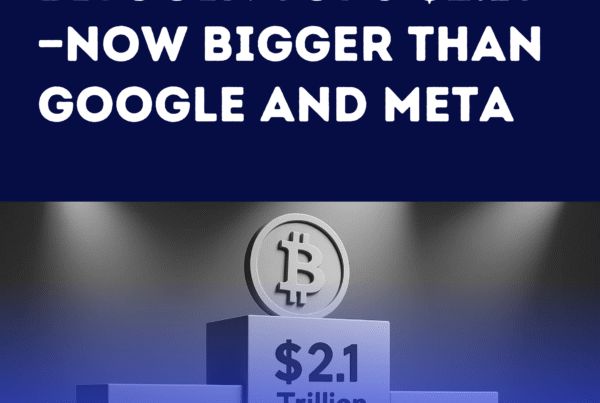
Introduction
Blockchain technology, long hailed as a disruptor, is approaching an inflection point. According to Citi’s analysis, blockchain could reach billions of users and unlock trillions of dollars in economic value by 2030. Unlike highly visible innovations such as smartphones or AI models like ChatGPT, blockchain operates largely in the background, making its transformative impact less immediately obvious.
Citi’s Global Perspectives & Solutions (GPS) report emphasizes that blockchain’s success will be measured not by how many people consciously adopt it, but by how seamlessly it integrates into daily life. As central banks experiment with digital currencies and industries embrace tokenization, blockchain’s hidden revolution is quietly reshaping the future of finance, gaming, and global commerce.
Billions of Users: Blockchain’s Path to Mass Adoption
The promise of blockchain adoption rests in everyday integration. Citi forecasts that mass adoption will occur when blockchain products have over a billion end users who may not even realize they are interacting with blockchain technology.
Central Bank Digital Currencies (CBDCs)
Countries representing nearly two billion people, including China, India, and members of the European Union, are piloting or developing central bank digital currencies (CBDCs). By 2030, Citi expects up to $5 trillion worth of CBDCs to be in circulation, with about half linked to distributed ledger technologies.
CBDCs will modernize payment systems and serve as critical catalysts for blockchain usage. They offer more efficient payment settlement, improved financial inclusion, and the potential to transform reserve management for central banks and commercial banks alike.
Gaming and the Metaverse
The gaming industry, with over three billion players globally, offers a massive entry point for blockchain adoption. Tokenized in-game assets, decentralized marketplaces, and blockchain-based identity systems are already beginning to appear.
Citi predicts that even if a small percentage of gamers adopt blockchain-enabled games, the resulting user base could drive exponential growth. Web3 gaming adoption is expected to rise significantly in Asia before spreading globally.
Social Media and Consumer Brands
Blockchain technology is also making inroads into social media and brand engagement. Platforms are introducing digital collectibles and in-app token economies. Companies like Amazon, Nike, and Adidas are exploring NFTs and tokenized assets, bringing blockchain to mainstream consumers through familiar interfaces.
Trillions in Value: Tokenization as Blockchain’s Killer Application
Tokenization, the process of digitally representing real-world assets on a blockchain, is poised to be the “killer use case” that drives blockchain’s mainstream breakthrough.
Financial Assets and Private Markets
Citi estimates that the tokenized value of financial and real-world assets could reach between $4 trillion and $5 trillion by 2030. Private market assets, including private equity, venture capital, real estate, and collateral markets, are particularly ripe for tokenization.
The benefits include:
- Operational Efficiency: Reducing costly reconciliation processes and settlement failures.
- Fractionalization: Enabling broader investor access to traditionally illiquid assets.
- Transparency: Creating golden sources of truth for asset ownership and history.
Trade Finance
The $12 trillion global trade finance market has long been plagued by inefficiencies and manual processes. Blockchain’s immutable and transparent nature can revolutionize trade finance by digitizing documentation and reducing fraud.
Legal reforms, particularly in the United Kingdom, that recognize digital trade documents are expected to accelerate blockchain’s integration into global trade workflows.
Technology Enablers: Building the Infrastructure for Blockchain Growth
Blockchain adoption at scale will not happen without critical technological advancements. Citi identifies four key enablers necessary for blockchain’s mainstream breakthrough:
Decentralized Digital Identity
Users must have secure, self-sovereign identities to navigate blockchain ecosystems. Decentralized identities allow individuals to control how their personal data is accessed and shared, offering privacy and security while enabling access to blockchain-based services.
Zero-Knowledge Proofs (ZKPs)
Privacy remains a major hurdle for public blockchain adoption, especially for corporate users. Zero-knowledge proofs allow users to verify the validity of data without revealing the data itself. ZKPs will enable scalable, privacy-preserving blockchain applications.
Oracles
Blockchain networks cannot access off-chain data directly. Oracles act as bridges between blockchain systems and external data sources, facilitating use cases such as DeFi, insurance, and real-world asset tokenization.
Secure Bridges
With multiple blockchains serving different purposes, interoperability is essential. Secure bridges enable asset and data transfers across networks, preventing ecosystem fragmentation and fostering broader adoption.
Legal Enablers: Smart Legal Contracts and Regulatory Evolution
Technological innovation must be matched by legal and regulatory advancements. Citi highlights smart legal contracts (SLCs) as a crucial legal enabler for blockchain’s future.
SLCs combine traditional contract structures with automated execution through computer programs, using distributed ledger technology to ensure:
- Increased trust through tamper-proof records.
- Enhanced transparency and auditability.
- Reduced reliance on intermediaries.
- More efficient enforcement of obligations.
The United Kingdom and other jurisdictions are already adapting legal frameworks to recognize digital documents and smart contracts, paving the way for blockchain-based commerce.
Challenges to Overcome
Despite the optimism, significant hurdles remain on the path to blockchain’s mass adoption:
- Regulatory Fragmentation: Differing regulations across jurisdictions could hamper interoperability and scalability.
- Security Risks: As tokenized assets grow in value, cyber threats will escalate, demanding robust security frameworks.
- Interoperability Barriers: Disconnected blockchain networks risk creating silos unless seamless bridges are developed.
- User Experience Issues: Current blockchain applications are often complex and intimidating to mainstream users.
Addressing these challenges will require coordination across technology developers, regulators, financial institutions, and consumer brands.
Blockchain’s “ChatGPT Moment”: Not Yet, But Coming
Unlike AI tools that achieve viral adoption through highly visible consumer interfaces, blockchain is a backend revolution. Its success will not be measured by flashy apps but by its invisible integration into critical infrastructure.
As Henri Arslanian, a leading blockchain investor and former PwC global crypto leader, notes, mass adoption will happen when blockchain operates silently in the background — much like how consumers use WiFi or cloud computing without thinking about the underlying protocols.
Gaming, financial services, trade finance, and social media offer some of the most promising arenas where blockchain’s daily impact will become pervasive without users needing to understand the underlying technology.
Conclusion: A Tipping Point by 2030
Citi’s analysis presents a compelling vision: by 2030, blockchain could have over a billion users and support trillions of dollars in economic activity. This growth will not happen overnight, nor will it happen without overcoming serious technological, regulatory, and cultural barriers.
Yet the momentum is building. Governments, corporations, and startups are investing heavily in building the necessary plumbing — decentralized identities, privacy solutions, oracles, bridges, and legal frameworks.
While blockchain may not have its “ChatGPT moment” in the public eye, it is quietly engineering a transformation behind the scenes. By 2030, the technology that once seemed niche and speculative could become as embedded in everyday life as the internet itself.




